A Cold, Dark, and Very Gentle Place
Dark Souls, and the struggle toward sanctuary
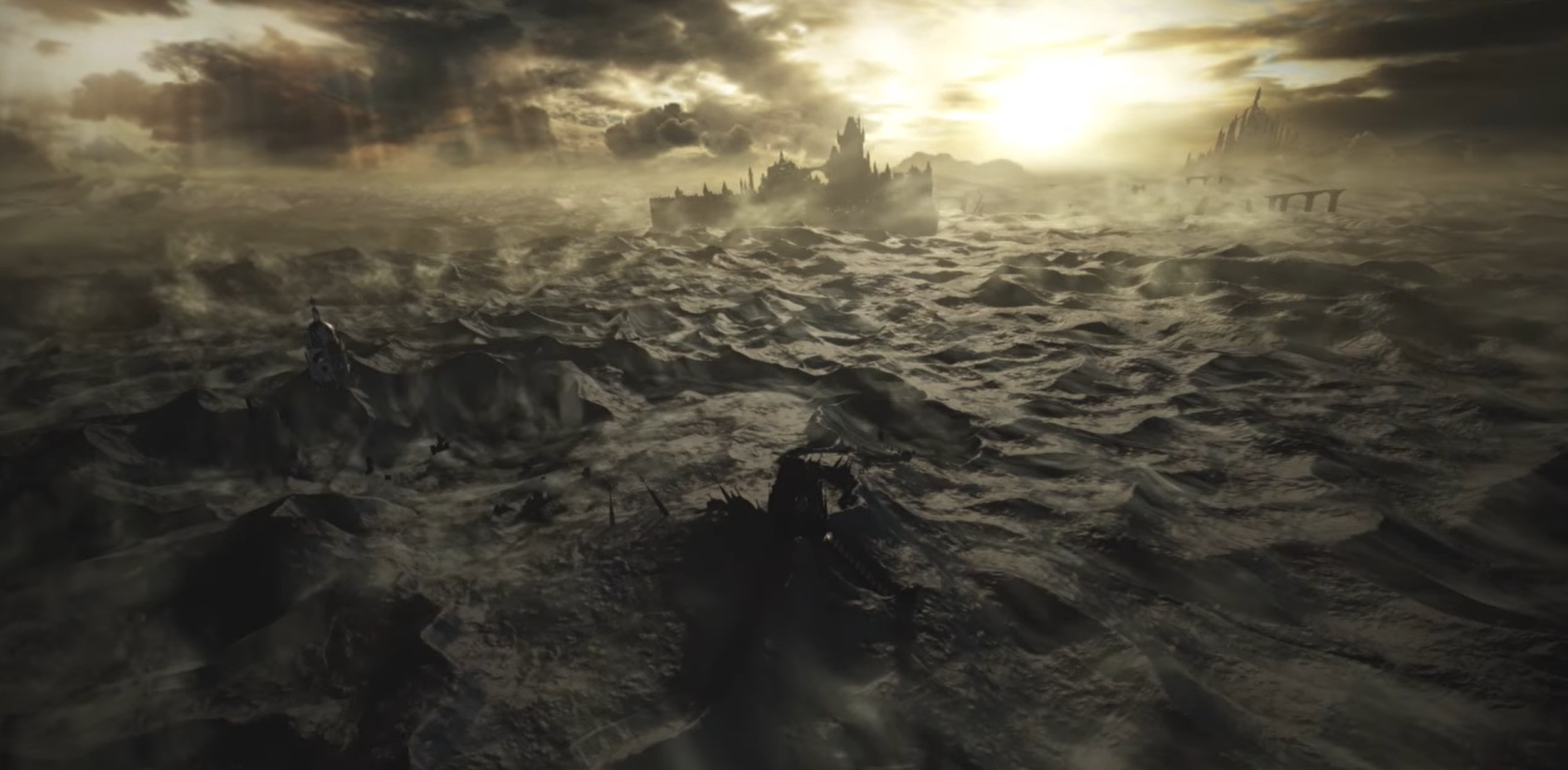
The painter sits before her canvas, contemplating its infinite possibilities.
"Thou'rt Ash. Thou'st a pact made with uncle Gael. So I wish to tell thee all. Behold its size. This is my canvas. It's to be a cold, dark, and very gentle place...But first, I must see flame."
The Dark Souls trilogy is pierced by an irregular throughline of seeking and desperation. In Dark Souls III, the Ashen One is a failed Unkindled, one of many Undead who were burned by an unsuccessful linking of the flame. Arisen once more by the toll of Firelink's bells, the Ashen One is tasked by the Fire Keeper to return the Lords to their thrones. Ludleth of Courland, the only Lord to not abandon his throne, sits alone and meager, dwarfed by his seat and his unwieldy crown.
In English, Ludleth tells us that he is "but a small figure who will die a colossus." In Japanese, we are treated to the transparent truth of his reign:
"Even this Pygmy here, was honored to become a Lord."
While Dark Souls has a story that is regularly seen as obtuse and up for personal interpretation, Dark Souls III's dual DLC chapters are about a specific order of events and characters: the Pygmies, the Dark Souls of Man, and a future without flame. In the Ashes of Ariandel, locked away in the small upper room of a cathedral, sits a girl. A painter. And as she looks upon her monumental canvas, she dreams of the home that she can create, and of the sanctuary she can provide.
The culmination of the Dark Souls saga, across its variant games filled with difficulty, bloodshed, and desperation, is not one of clearcut victory—its story is anything but straightforward. But Dark Souls wants us to know that there is a purpose to the devastation and that even without flame life continues. As the Painter tells us, man's ultimate respite lies within darkness.
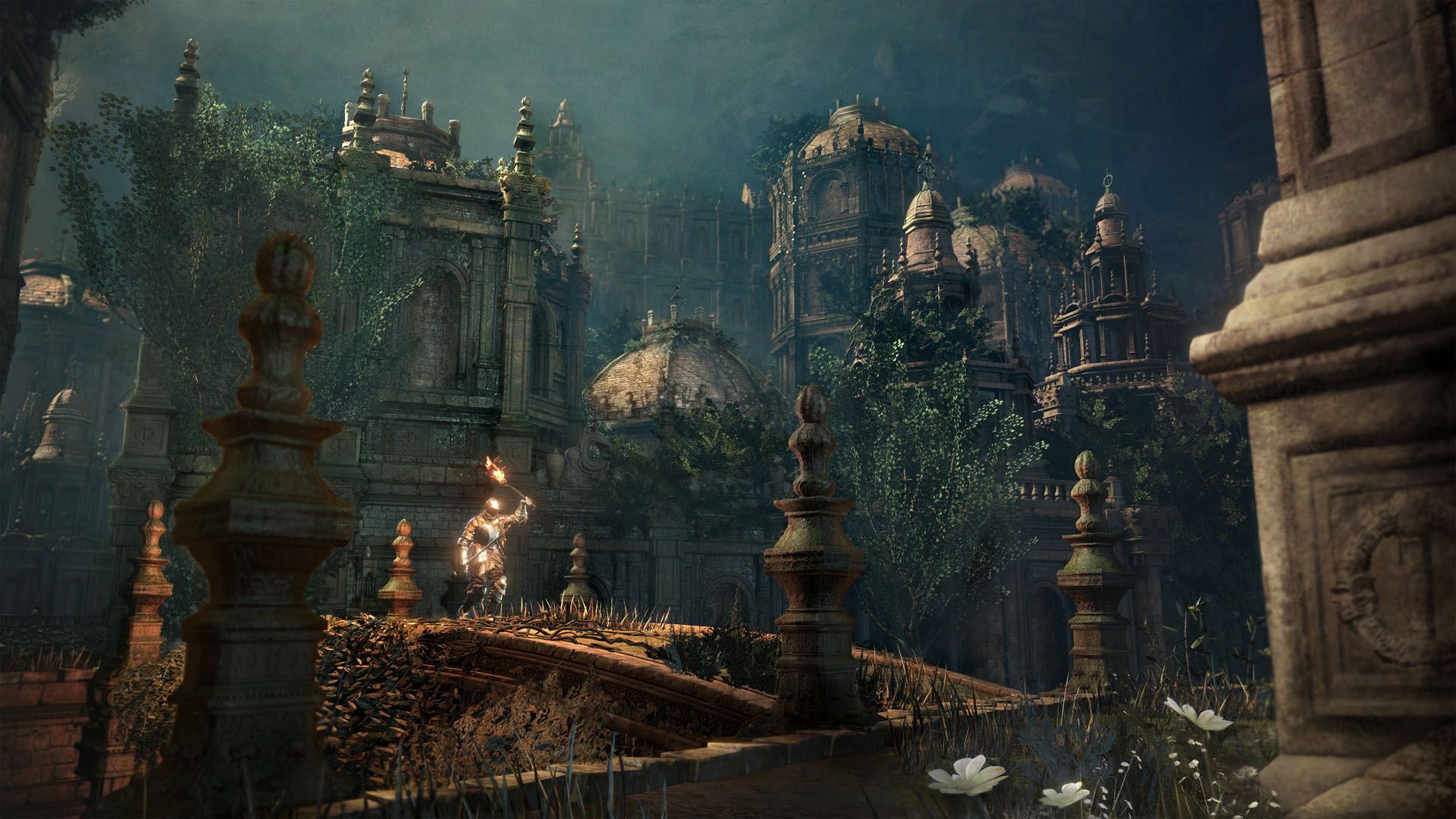
The Dark Soul of Man
Souls within the lore of Dark Souls bear unique properties. Every living thing has within it a Soul, but only those of great power can be blessed with a Lord Soul. In the first entry, Lord Souls are used to satiate the Lordvessel, providing access to the Kiln of the First Flame where Lord Gwyn lies waiting for the Chosen Undead.
Eons ago, the Dark Soul was claimed by one of the ancestral humans, the Furtive Pygmy. This Pygmy, so easily forgotten, belonged to a sect of Pygmy Lords that protected this original flame from influence and tampering. While Lord Gwyn sacrifices himself to kindle the First Flame, the Age of Fire—and thus the age of gods—is ending. As humanity grows in power, it seeks a world free from the influence of the Flame and its Disparity, demanding a return to darkness where they can be free of the Lords.
The Darksign, a brand placed on the cursed Undead, is emblematic of the efforts of humanity. Gwyn forged his ring of fire around the Dark Soul of Man, creating the accursed Darksign that would forever enfeeble the powers of humans. Gwyn then created covenants and miracles that would shackle the humans to their fate, and rewrote history itself in favor of linking the Flame. As Gwyn cultivated his age of miracles, the Pygmy Lords were banished to their city at the end of the world, and he was able to control reality itself.
As the centuries passed and the Darksign weakened, the human spirit regained its power via the line of Chosen Undead. Gwyn was forced to sacrifice himself to rekindle the Flame and power the Darksign, but this alone was not enough to stem the tides. The Darksign itself is symbolic of man's contentious relationship with fire and dark, the flames flickering at the edges of the eclipse. At the end of time, this eclipse sits skyward and heralds the coming end of Lord Gwyn's ambitions. And while we are assumed to fear the dark, The Painter gives a glimpse of the truth, that perhaps humanity would be better off with a goodly home, a cold, dark, and very gentle place.
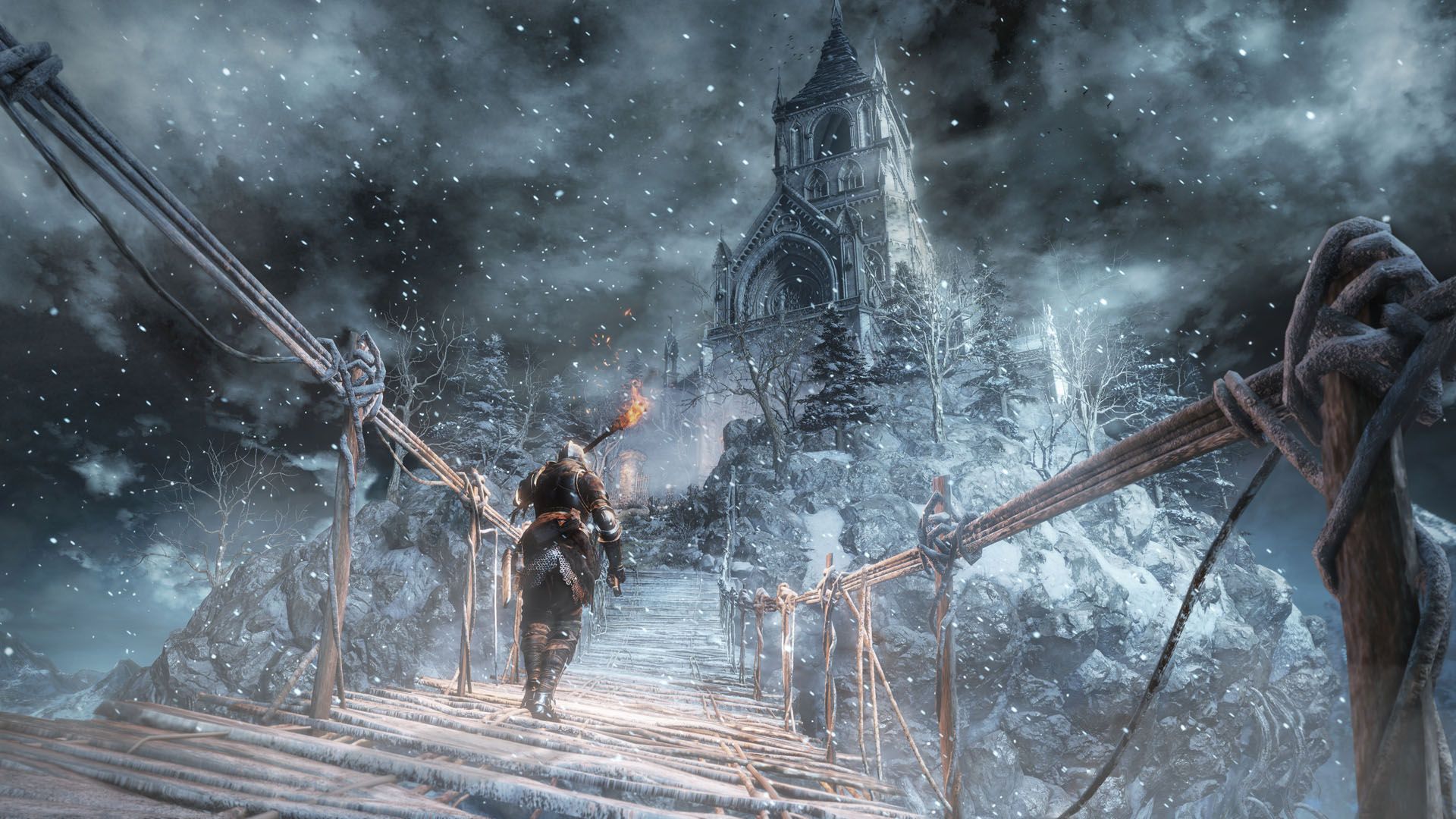
Born In The Dark
"After the advent of fire, the ancient lords found the three souls. But your progenitor found a fourth, unique soul. The Dark Soul. Your ancestor claimed the Dark Soul and waited for Fire to subside. And soon, the flames did fade, and only Dark remained. Thus began the age of men, the Age of Dark. However…Lord Gwyn trembled at the Dark. Clinging to his Age of Fire, and in dire fear of humans, and the Dark Lord who would one day be born amongst them, Lord Gwyn resisted the course of nature. By sacrificing himself to link the fire, and commanding his children to shepherd the humans, Gwyn has blurred your past, to prevent the birth of the Dark Lord."
Darkstalker Kaathe
The Primordial Serpent, preserved throughout the Ringed City by way of statues and reliefs, seems to have been a comrade of the ancient humans. Darkstalker Kaathe, an enemy of Gwyn's, empowered his foes and betrayed his efforts. Kaathe desires to serve the Dark Lord, a descendent of the Chosen Undead, who might lead the way into the Age of Dark and permanently undo Gwyn's Age of Fire.
Manus—likely the mutated form of the Furtive Pygmy—awaits in the depths of the Abyss, guarded beneath heretical Oolacile. He seems to have something of an attraction to the Chosen Undead as he pulls them into the world of the past, to discover his burial beneath the city of magic. As a primordial human, Manus is possibly even older than the Pygmy Lords, and his influence over the Abyss forced Gwyn to bury him. Manus' defeat at the hands of the Chosen Undead only spread the creature across time, his pieces gaining consciousness and form, quickening the arrival of the Age of Dark.
"Believe it or not, Oolacile has brought the Abyss upon itself. Fooled by that toothy serpent, they upturned the grave of primeval man, and incited his ornery wrath. What could they have been thinking? But to you and I, it's all ancient history. You have to ask yourself. Does it really matter? Heh heh heh..."
Marvelous Chester
The Painter, a serpentine girl who possesses a cosmic creative power, desires a pigment colored from the Dark Soul of Man. She is protected by a ward that she calls Uncle Gael, a Slave Knight whose fealty is unknown but is tasked with a lifetime of senseless warfare. Gael is not a Champion nor a Lord, and with full knowledge of what the dark soul will do to him, he seeks the material to complete the Painter's rotted world. While Gael believes the flame will open the Painter's eyes to the reality of her world, she is undeterred—The Painter believes that a pigment forged of the Dark Soul, borne of the dried blood of the Pygmy Lords, will serve as the foundation for her new world.
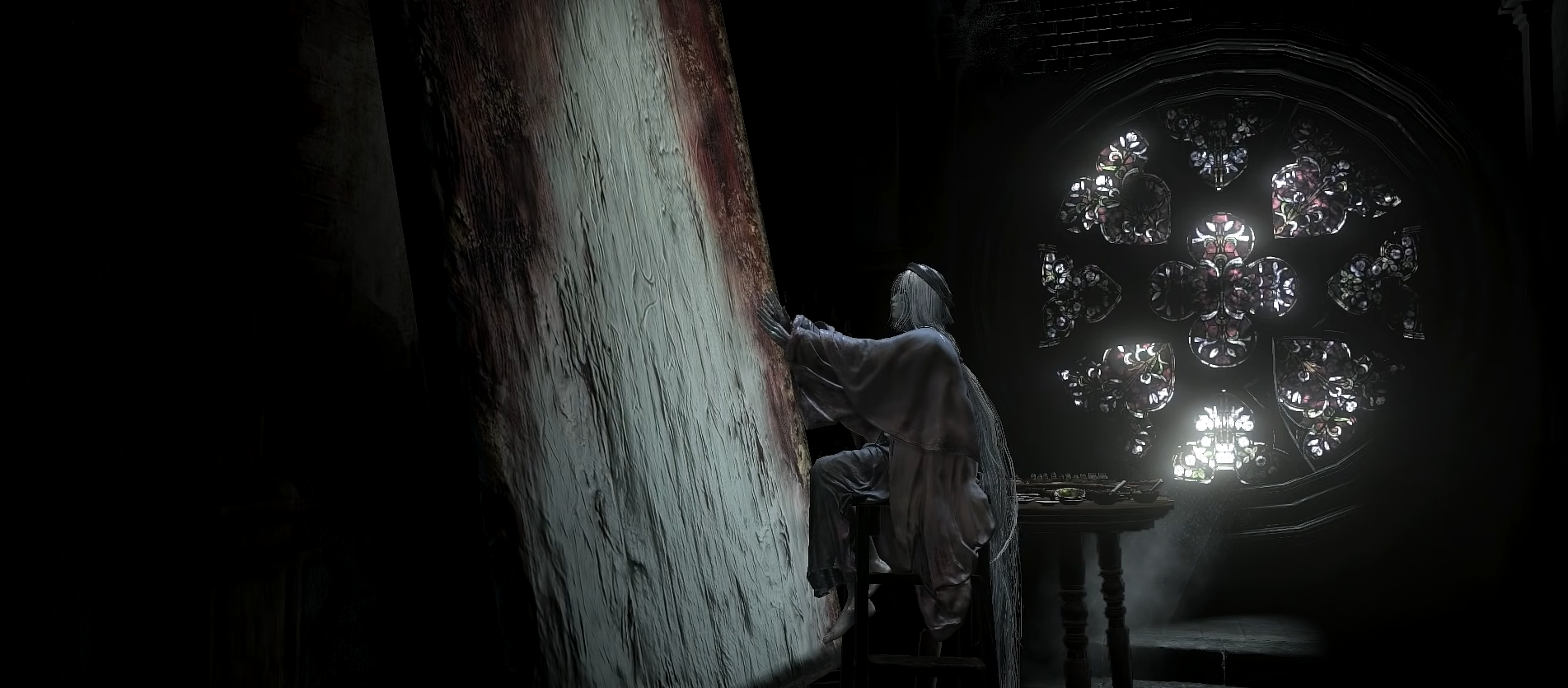
While we do not know the Painter's origins, her appearance likens her to other entities in the series, such as Seath's experimental child Crossbreed Priscilla in the first Painted World, and Company Captain Yorshka in remote Anor Londo in Dark Souls III. These crossbreeds remain hidden because of how they point to the despicable perversions of the Lords, crafting an assumption that the Painter too was hidden away as an abomination. Priscilla, Yorshka, and the Painter each help humans in their own way, and there is developer confirmation that Priscilla was initially the "heroine" of Dark Souls, granting help to the player in a similar fashion to the Maiden in Black and Emerald Herald. These crossbreed entities, descendants of gods and Lords, might have felt sorry for the Chosen Undead and Ashen One, guiding them toward their fate.
When Gael discovers that the blood of the Pygmy Lords has dried and the Dark Soul of Man is beyond his grasp, it is too much for him to bear. Driven to madness, Gael slaughters the remaining Pygmies, severing all material ties to ancestral humankind. As he drinks from their decrepit bodies and takes the Dark Soul into himself, Gael's revelation mutates his body and warps his mind. Fully corrupted by the Dark Soul, Gael must engage the Ashen One in combat, and serve up his own corrupted blood for the Painter's dear pigment.
Gael operated out of a fear of humanity, his lust for the Dark Soul existing only for the sake of the Painter, his Lady. While Gael turns Hollow of the corruption of the soul, he momentarily regains his humanity in his desperate pursuit to fulfill his Lady's wish. And there she awaits her knight, dreaming of the beautiful sanctuary she might create.
"My thanks, Ashen One. I can almost see the flame. Soon uncle Gael will bring me the pigment. I wonder if he has found it? The dark soul of man..."
Time Compression
At the end of the world, caged in a cramped room in the Ringed City, sleeps a woman. Filianore, the youngest of Gwyn's children, was gifted to the Pygmies in exchange for their help against the Everlasting Dragons. Gwyn promised that he would come for her eventually, a promise broken by his own contest with Chosen Undead. In the passage of countless eons, Filianore rests upon her broken egg, dreaming endlessly for the sake of Man.
"Her slumber, is a deceit...a lid, covering an overgrown privy; a prop to keep thee from the dark soul of thine desire."
Pygmy King
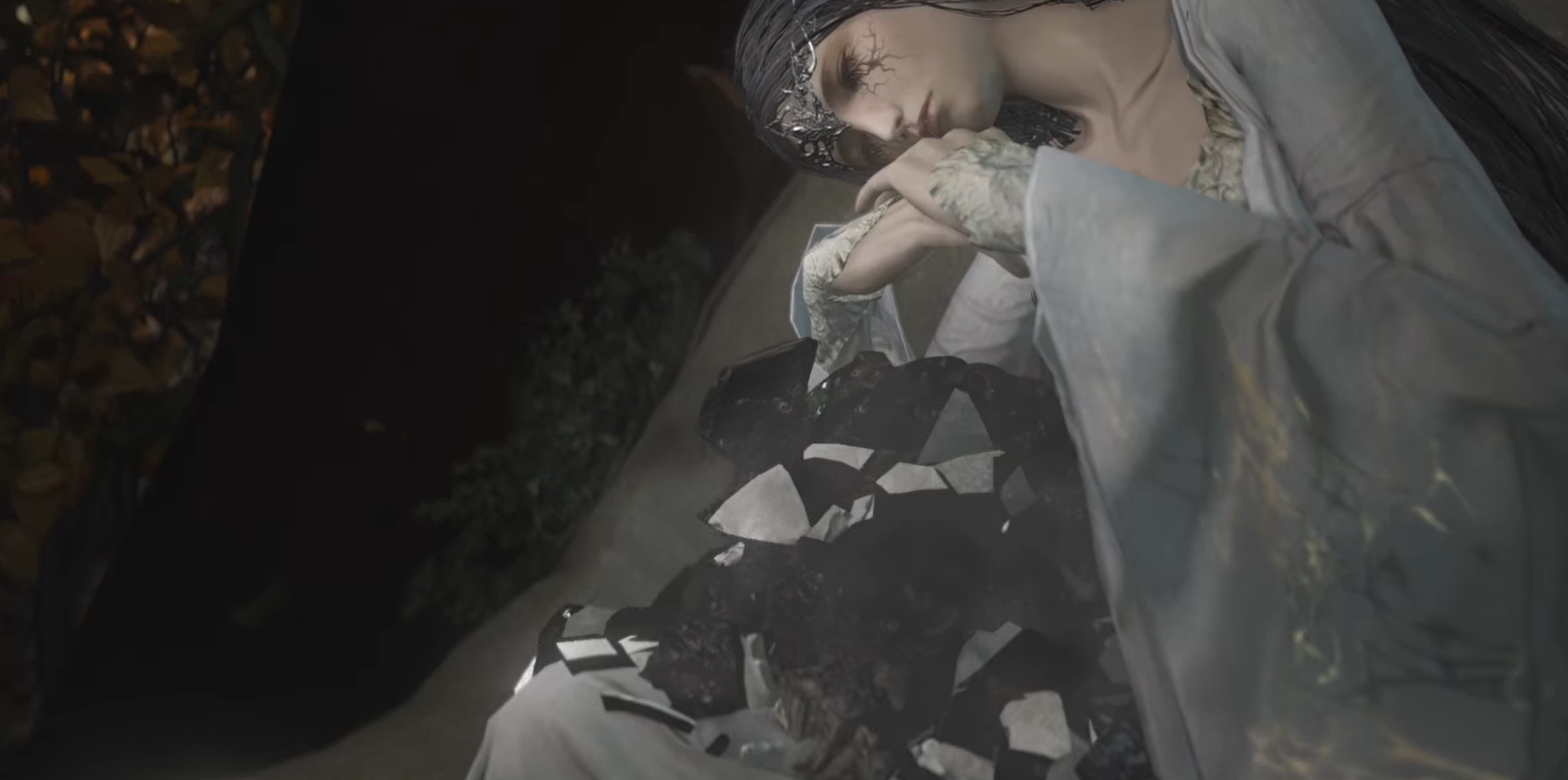
Similarly to her older sister Gwynevere, Filianore's task is built partially on illusion. The Gwynevere we encounter in Dark Souls is borne of Gwyndolin's own mesmerist magics: the Sun Princess and the Sun itself are cast as an illusion to maintain a semblance of divinity in the abandoned capitol of the gods, Anor Londo.
Filianore participates in the working of this dream. She seems to be endlessly casting magic that freezes the Ringed City in time and masks the reality of her form. When the Ashen One performs the heretical act of touching Filianore's egg, the illusion is shattered—Filianore is awakened and transports the Ashen One into their true reality, an endless desert ruin outside of time. Standing upon a world of ruin, the Ashen One must step away from the goddess's decayed corpse and walk onward toward the destined sortie with Slave Knight Gael. There the Dark Soul of Man awaits, festering in Gael's immortal body, set against a stark ruin littered with the corpses of the Pygmy Lords.
The Dark Souls series has very little interest in linear time. While each game in the trilogy is connected, it is difficult to settle upon an agreed timeline that makes sense when considering the massive text of lore at hand. The mystery of time, the egg's substance, and the Ashen One's role is contested, and there is evidence for and against the reality of the Ringed City, whether it is an illusion representing what once was or if Filianore's waking simply cast its reality forward through countless epochs. Filianore may have suspended the Ashen One for eons, allowing them to visit the world at the end of time while the agonizing ages pass normally for everyone else. When the Ashen One is reunited with Slave Knight Gael, we see a man who has been driven to the brink, transformed by his fruitless search.
Humans can do nothing to staunch the flow of time's inexorable passage. As the Unkindled stands before Filianore, a flash of light spirits them far into the future, light being the representative of time throughout the Dark Souls trilogy. Filianore, the Pygmy Kings, and Gael are not present for this time travel—they must endure the march toward apocalypse, witnessing the material degradation of the entire world.
"We are amidst strange beings, in a strange land. The flow of time itself is convoluted, with heroes centuries-old phasing in and out. The very fabric wavers, and relations shift and obscure. There’s no telling how much longer your world and mine will remain in contact.”
Solaire of Astora
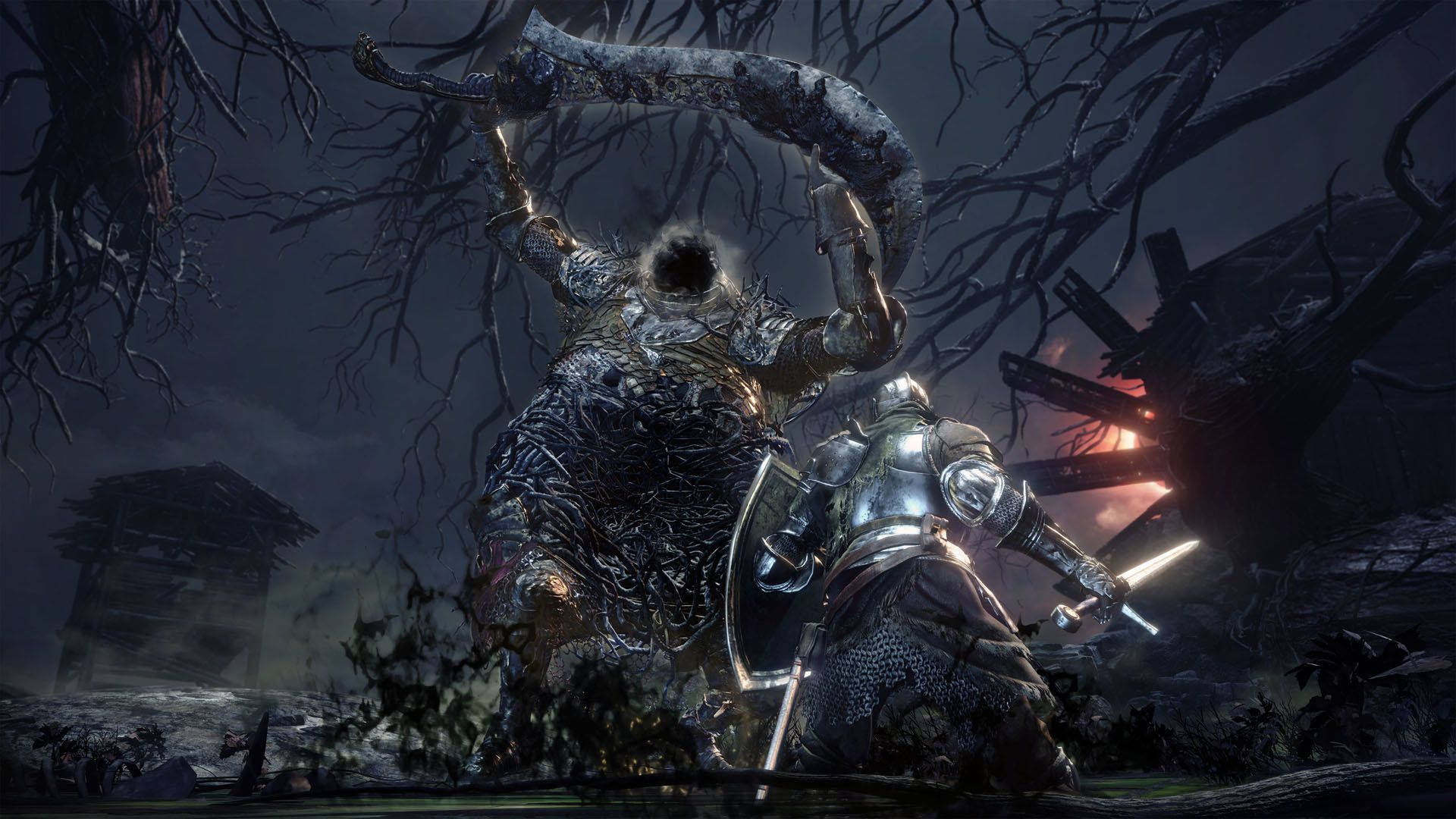
The Abyss, So Easily Forgotten
Dark Souls is filled with death, misery, and pain. Any goodness to be found within its worlds comes at a considerable cost, and all things inevitably fall to ruin. Humanity is presented as gentle and feeble—the Furtive Pygmy is one of the first of the ancient humans, blessed with a Lord Soul of its own that remains undiscovered until the Ringed City.
"But then there was Fire, and with fire came disparity. Heat and cold, life and death, and of course, light and dark. Then from the dark, They came, and found the Souls of Lords within the flame. Nito, the First of the Dead, The Witch of Izalith and her Daughters of Chaos, Gwyn, the Lord of Sunlight, and his faithful knights. And the Furtive Pygmy, so easily forgotten."
Humanity was once calm, docile, and serene, an ancient race of feeble creatures whose place in the world was infinitesimal until the advent of the First Flame. It is only after their humanity becomes too much to bear that the Pygmies must change—into lords, sorcerers, and beasts of the Abyss.
Manus, one of these initial beings and possibly the Furtive Pygmy itself, was cleaved of his quiet and gentle nature because of the intrusion of the city of Oolacile. Disrupted, cast aside, and forgotten, the Abyss poured from Manus and he became a being cursed with desire. Much like the Abyss, Manus became a void beneath the living, a creature whose humanity warped and mutated into a presence of indulgence. From this hunger, the Abyss created other entities, such as the Locusts that share the Ringed City with the Pygmies.
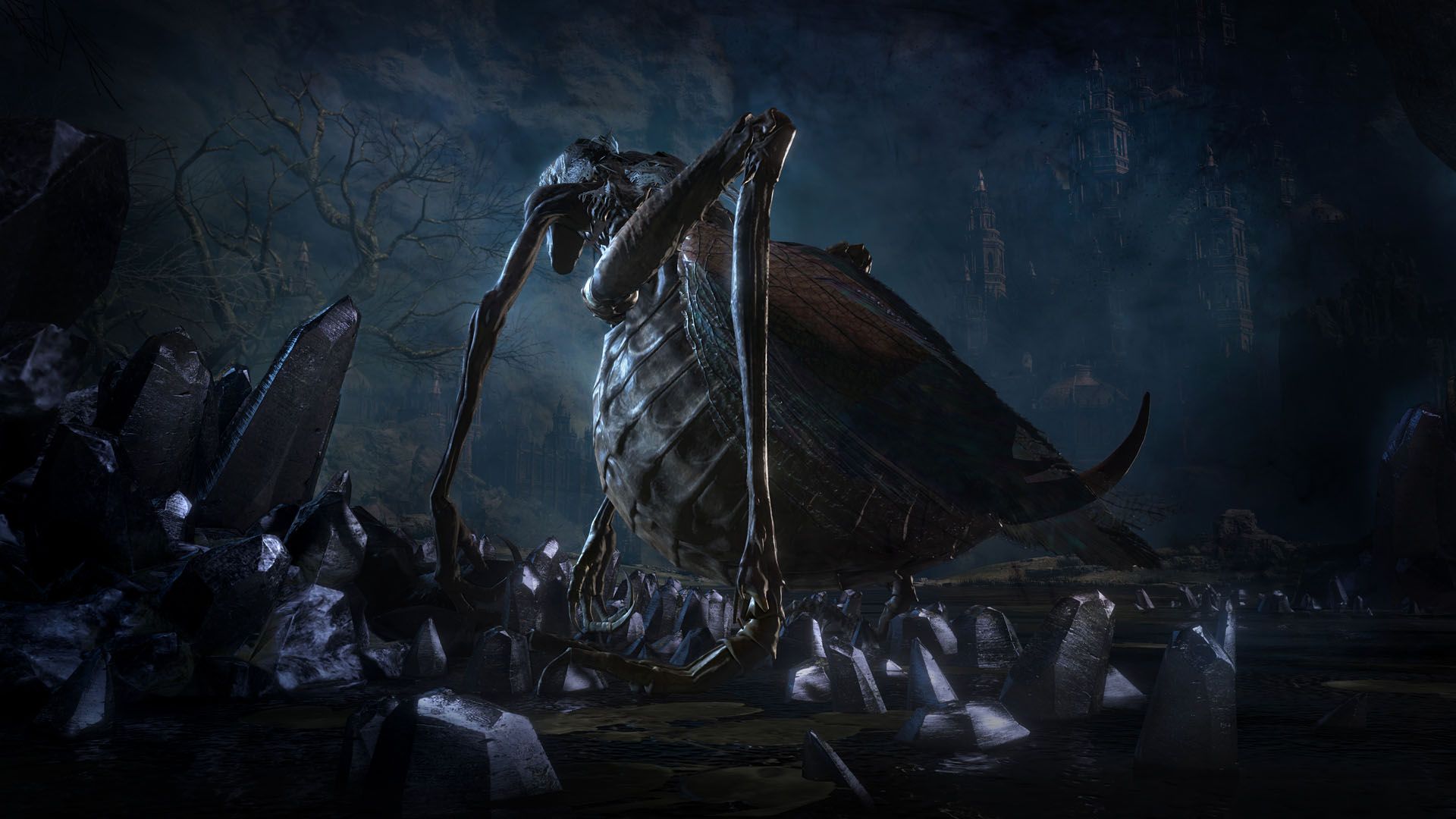
The Locusts not only propagate their kinship with the ancient humans, but they also tell the Ashen One that the dark is not something to fear. While every other entity seems to resist this coming age, the Locusts welcome it with open arms.
"Fear not, the dark, my friend. And let the feast begin."
Manus, a symbol of man's consumption, is like Slave Knight Gael a mutation of the Dark Soul. He is a being whose consciousness has thinned to the point of breaking, but whose power is anything but brittle.
“I still think on that creature from the Abyss that preyed on me. My faculties were far from lucid, but I quite clearly sensed certain emotions. A wrenching nostalgia, a lost joy, an object of obsession, and a sincere hope to reclaim it... Could these thoughts belong to the beast from the Abyss? But if that were true, then perhaps it is no beast after all?”
Dusk of Oolacile
As the Ashen One approaches the Ringed City, it is apparent that this age of gods—the Age of Fire—has been prolonged to the point of absurdity. The world has embraced corruption, and the Abyss resides alongside The Deep, a dreamworld manifestation of an unknown sea. These endless calamities and mutations can only continue alongside the perverse linking of the fire, and as continued failures divert reality from the Age of Dark, sanctuaries must be formed. We know very little of the Painter, but it seems that Gael, a Slave Knight who has seen countless battles and fought for absurd icons, supports her endeavor because he too desires respite from the flame.
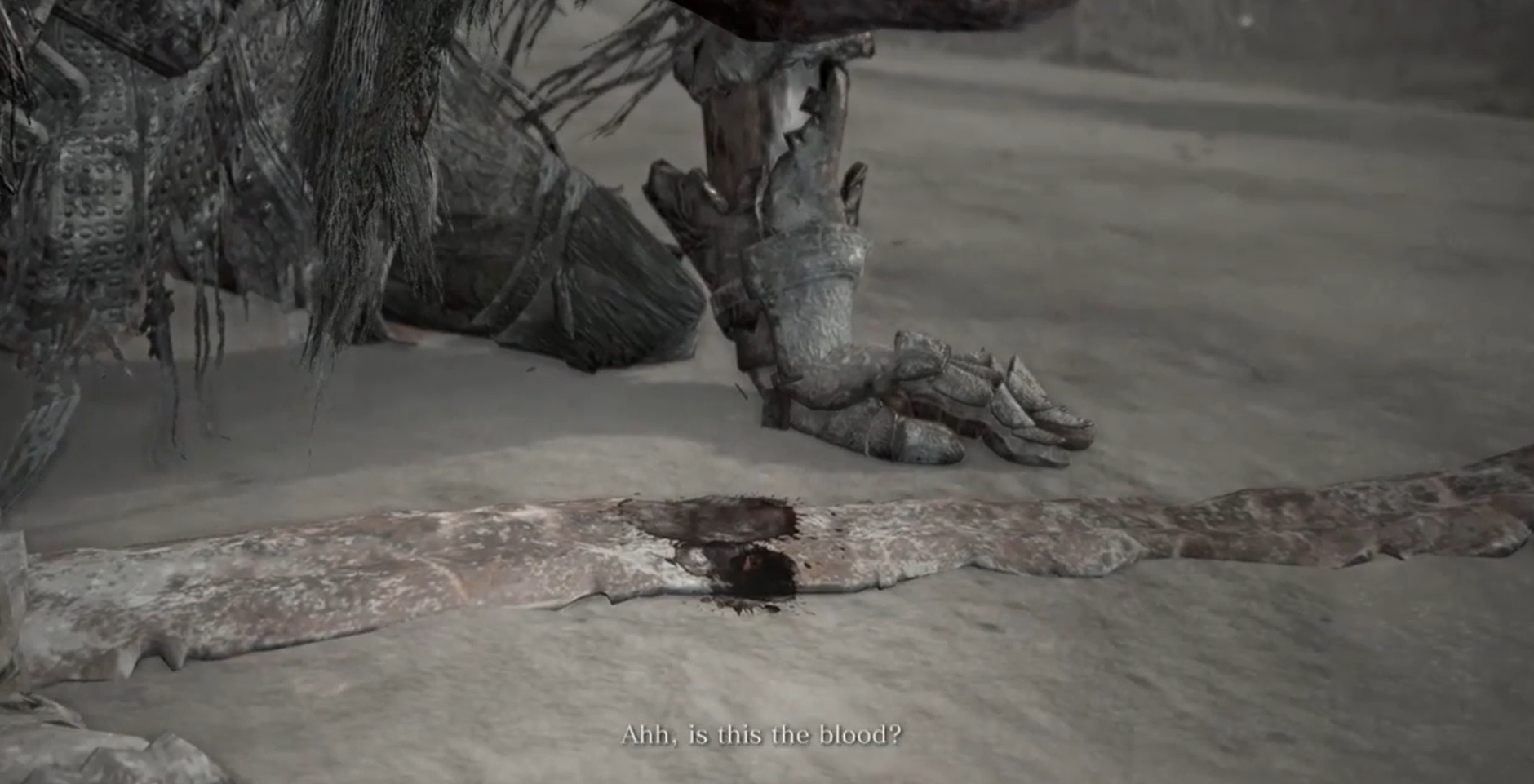
The Painter's goal rests beyond the fighting of the gods, immune to the constant wars and calamities that befall era after era. Her painting, unlike any other seen before, will grant humanity the tranquility it so desperately requires. This will be their paradise, a persistent bastion free of pain, misery, and needless death. Unlike the rot of Ariamas and the horror of Ariandel, this newly painted world will be a nirvana, granting both peace and oblivion.
"I see. We are much alike. Then I will name this painting "Ash". Twill be a cold, dark, and very gentle place. And one day, it will make someone a goodly home."
Twilight of the Gods
In Greek mythology, Prometheus' defiant act was carried out in favor of humanity, but it wasn't man who engaged in this endeavor. This Greek God of Fire stole flame from the Olympians on behalf of humankind, inevitably granting man tools, technology, civilization, and warmth. Zeus condemned Prometheus to eternal torment for this sin, lashing him with a stone whereby an eagle would eat his regrown liver daily until the end of time.
Sin is also present in Dark Souls. Gwyn's act of kindling the First Flame and beginning the endless cycle of fire and dark stole life from the Age of Ancients and granted newfound power and purpose to the gods. And while the Lords endured their eras of comfort for a time, they ultimately succumbed to the punishment of Gwyn's heretical act.
In the Ringed City, proudly displayed on a dais, is a regal statue of Lord Gwyn adorning one of the many Pygmy Lords with a crown. Before the Pygmy King is finally slayed by Gael in the wasteland, he crawls, eviscerated, begging for Filianore to save him.
"The Red-hood is come to eat us... to eat our dark souls..."
For gods and royalty to exist, they require subjects. Without subjugation, there is no one to rule, and any amount of infinite power that might exist in a deity is then wasted upon their abject loneliness. The Pygmy Lords ruled in their place at the end of the world, but their kingdom was granted by the favor of another. Gwyn allowed them to exist protected, but this permission invalidates them as gods. While Gwyn fought for his godhood by slaughtering the ancient dragons in open warfare, the Pygmy Lords sat on thrones that were doled out by a righteous hand. Even if the Lords were to claim themselves as royal, their meager humanity beneath the bootheel of the gods does not grant them the freedom they demand.
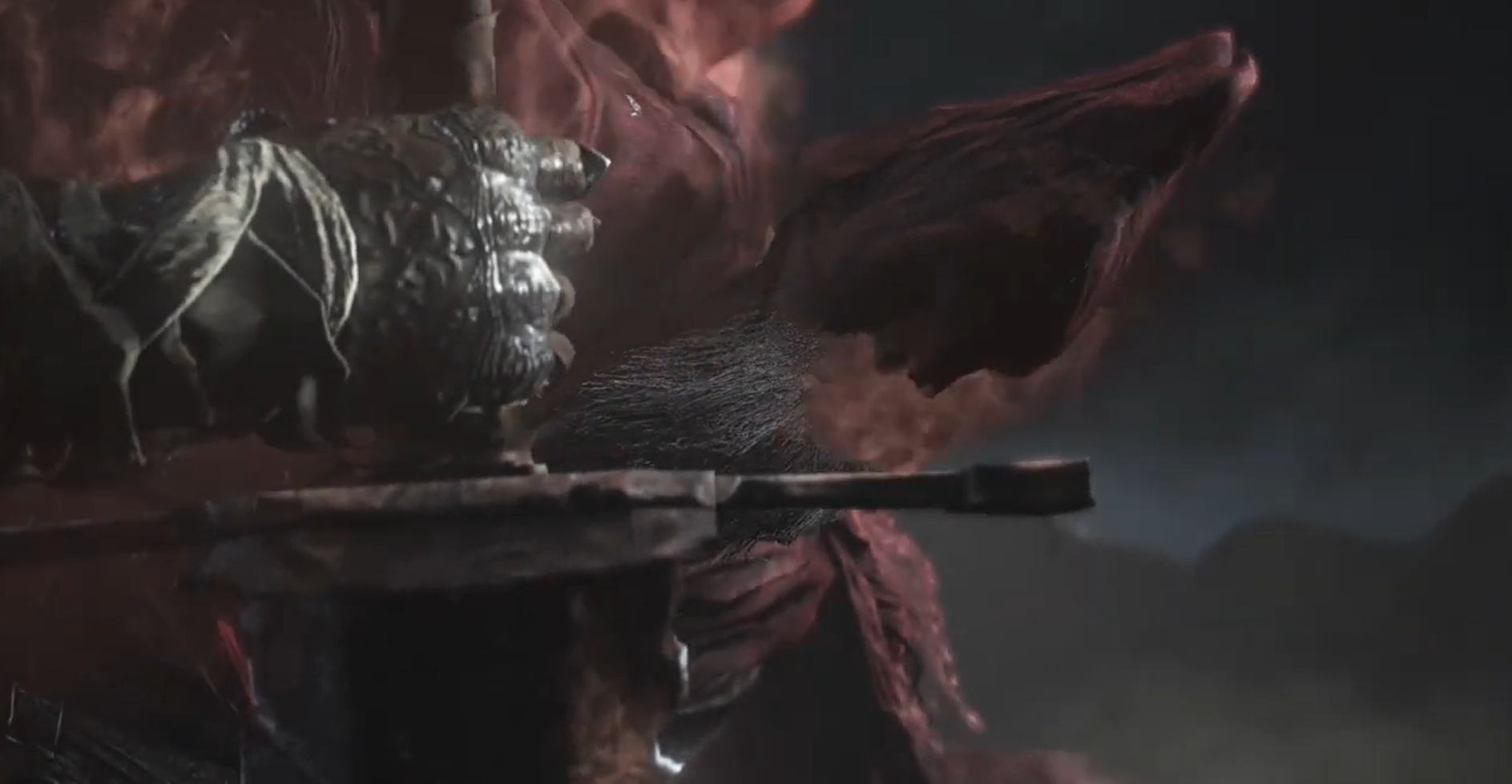
Slave Knight Gael circumvents this cycle through his determined refusal of both gods and ancestry. It is never learned who he owed fealty to or in what wars he fought, and the details do not matter. While Gael is initially presented to the Ashen One as meager and frail, it would require a soul of substantial merit and ability to last throughout the lands of Lothric and beyond in pursuit of the Dark Soul. Gael is indifferent to both the gods and the Pygmy Lords, apathetic to them both in his pursuit of his Lady's pigment. Whatever wars and feuds existed between Lord Gwyn and his foes are not only insubstantial at the end of things—they are no longer remembered.
In some ways, Slave Knight Gael is the game's hooded representation of the player's ambitions, directly contrasting Soul of Cinder, who is an amalgamation incarnate of the kings of old. While the Soul of Cinder defends the First Flame to the last, so too does Gael defend the discovered Dark Soul. And while Gael does attack the Ashen One, his actions are mired in the creation of this meager flame, his own bearer's blood restoring it for his Lady's pigment.
Rotted, Burning, and Dark
Out of desperation, Gael consumes the dried blood of the Pygmy Lords, stealing from them the Dark Soul of the Ringed City, and placing it within himself. Dark Souls portrays souls as physical, material objects—souls can be stolen, gained, and consumed. Slave Knight Gael, driven mad in his search at the end of all things, recognizes that the only way to find the Dark Soul of Man is to create it within himself.
Video games are replete with stories about the oxymoronic nature of the human soul. While humankind is often portrayed as feeble, their spirits are limitless. The journey of the powerless human has been showcased again and again in infinite ways, and while the details and aesthetics change the nature of it remains the same because of the comfort we find in tales of possibility and endurance. Dark Souls is nothing if not a great celebration of such endurance, even if its exploration of man's potential looks different than most.
The Ringed City, the final piece of content for Dark Souls III and the final bit of story for Dark Souls as a whole, does not end with a dramatic cutscene or grand piece of denouement. Even the final words with the Painter are optional. Instead, we are shown the similarities and juxtapositions of those who have survived the Age of Fire, and the final battle with Slave Knight Gael is emblematic of it all, a mirror to the struggles of the Chosen Undead, Bearer of the Curse, and Ashen One. Time surges forward and eons pass, and all efforts turn to ash while the embers cool.
As the Painter sits in her home, surrounded by consuming flames, she awaits the inevitability of the pigment. Whether Gael or another returns it to her, it matters not. And while she is seemingly immortal, it must be pondered if her painting and its sanctuary can survive the rot and the flame. As all things descend into the dark, as the other paintings become brittle and burn, as even the great gods are erased from history, it's difficult to believe that a lowly painting might remain. But as with the spirit of the lowly human, the furtive pygmy, hope endures.
"I wish to paint a picture. Of a cold, dark, and very gentle place."
